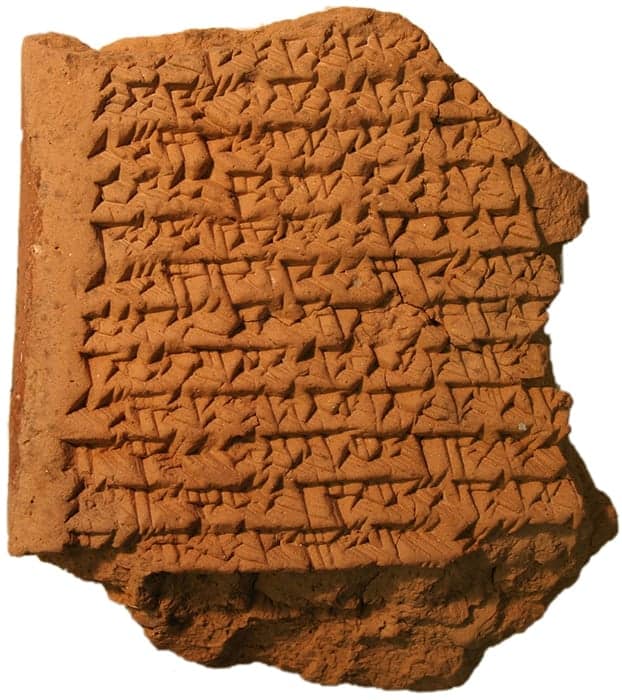
Ancient Babylonian astronomers may have used geometry to calculate the motion of Jupiter in the night sky, which means that their understanding of applied mathematics is much more sophisticated than historians had previously thought. That is the conclusion of astrophysicist and historian Mathieu Ossendrijver of Humboldt University in Berlin, whose analysis of five stone tablets implies that the Babylonians were capable of applying geometry in an abstract sense, rather than just using it to measure physical spaces.
Ossendrijver has deciphered the cuneiform inscriptions on a tablet stored at the British Museum and linked it to four other known tablets that describe the motion of Jupiter along the ecliptic in an arithmetical fashion. The inscriptions, says Ossendrijver, indicate that the Babylonian scribes could take that arithmetical data and represent it as a graph of angular velocity versus time. Just like when solving quadratic equations graphically, the area underneath the curve of the graph can be split into segments called trapezoids, and calculating the area of the trapezoids then gives the distance that Jupiter has travelled across the sky in a given time.
“The tablet contains a complete description of the motion of Jupiter, describing how its angular velocity in degrees per day varies in different segments,” explains Ossendrijver, who is an expert in Babylonian sciences and mathematics. “So for the first 60 days, it decreases linearly, then it decreases linearly but at a faster rate, and so on.”
Prophetic omens
Astronomy was a significant part of Babylonian culture, with priestly scribes watching the skies to provide prophetic omens. Although mathematical geometry had been invented by the Babylonians sometime between 1800 and 1600 BCE, there had been no evidence of it being used for astronomy, only for measuring physical things such as plots of land. If Ossendrijver is correct, then the Babylonians were able to make the conceptual leap to apply their knowledge of geometry in more abstract fashion.
“This is the first and only time, that we know of, that the Babylonians applied it in this way,” says Ossendrijver, who dates the tablets to between 350 and 50 BCE. “There’s no other evidence that they used it outside of astronomy; in fact there’s no evidence that they even used it for any planet other than Jupiter.”
Francesca Rochberg, professor of Near Eastern studies at the University of California, Berkeley, who was not involved in Ossendrijver’s research, says it is “exciting that [he] has been able to see the connection between such procedures involving trapezoids and the problem of the ecliptical progress of Jupiter through its synodic cycle”.
Missing graphs
Not everyone is entirely convinced, however. The physicist and historian James Evans, at the University of Puget Sound in the US, says that it is “far from clear that the Babylonian scribes would have seen it that way,” noting that there is an absence of any graphs on the tablets, unlike other mathematical tablets showing the geometrical measurement of land. “So while I don’t think it is reasonable to see the Babylonian scribes as anticipating the graphical methods described by [European scholar] Nicole Oresme in the 14th century, it does seem fair to say they had an instinctual grasp of the mean-speed theorem. That’s new and very interesting.”
The tablets are all damaged in some way, so perhaps the sections containing the graphs had broken off, suggests Ossendrijver. Alternatively, perhaps there are tablets yet to be discovered that feature the graphs.
Equally puzzling is why the trapezoid method seems to be limited to only a handful of tablets describing Jupiter, and why the knowledge was subsequently lost before being reinvented in Medieval Europe. Ossendrijver suggests one possibility is that it could have been “invented by a very clever astronomer, but wasn’t then taken up or understood by others”.
Ossendrijver’s analysis is published in Science.



